I looked up! What was it like to watch the partial eclipse in Kansas City
The last time a total solar eclipse happened, my eyes felt like they were melting for the rest of the day.
I made the mistake of looking at the eclipse without glasses, and I have learned since August 2017.
The path of totality in 2017 ran straight through Kansas City and Columbia while I was a student at the University of Missouri. The eclipse paired with the first day of class and made for an incredible atmosphere, even if I had to go to class in the afternoon with burning eyes.
Seven years later, the sky went dark once again as another total solar eclipse passed through the United States on Monday.
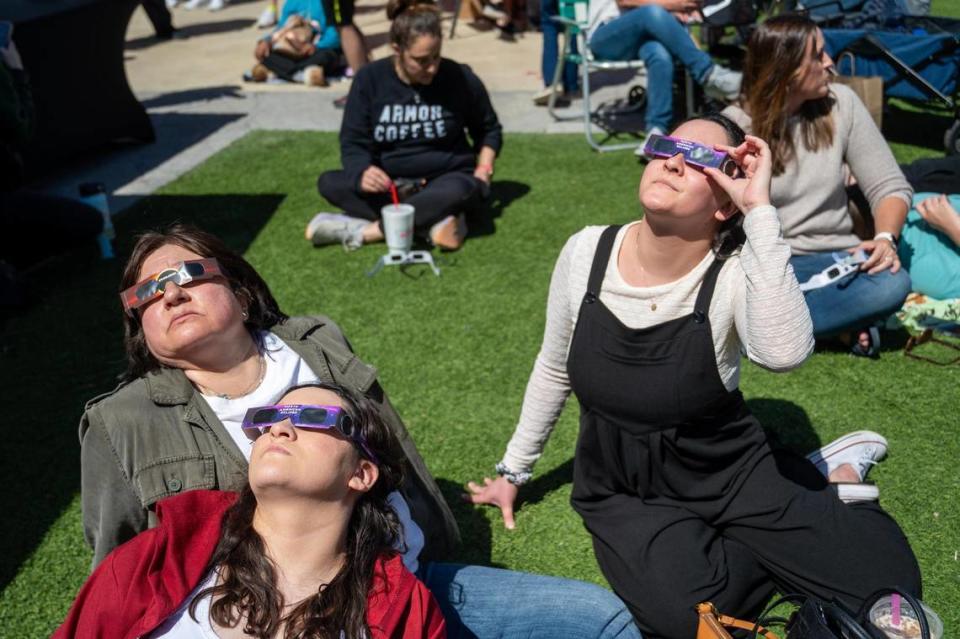
Unlike then, the Kansas City area did not completely darken during the solar eclipse. If you wanted to be fully covered by it, the closest destinations were Cape Girardeau, Missouri (5 hour drive) Carbondale, Illinois (5 hour, 30 minute drive) and Conway, Arkansas (5 hour, 50 minute drive).
That didn’t stop hundreds of people, like myself, from packing Donald J. Hall Sculpture Park, the lawn at The Nelson-Atkins Museum of Art to watch the eclipse Monday. Groups of friends and families claimed their spots on the lawn with blankets, chairs, food and pets in tow.
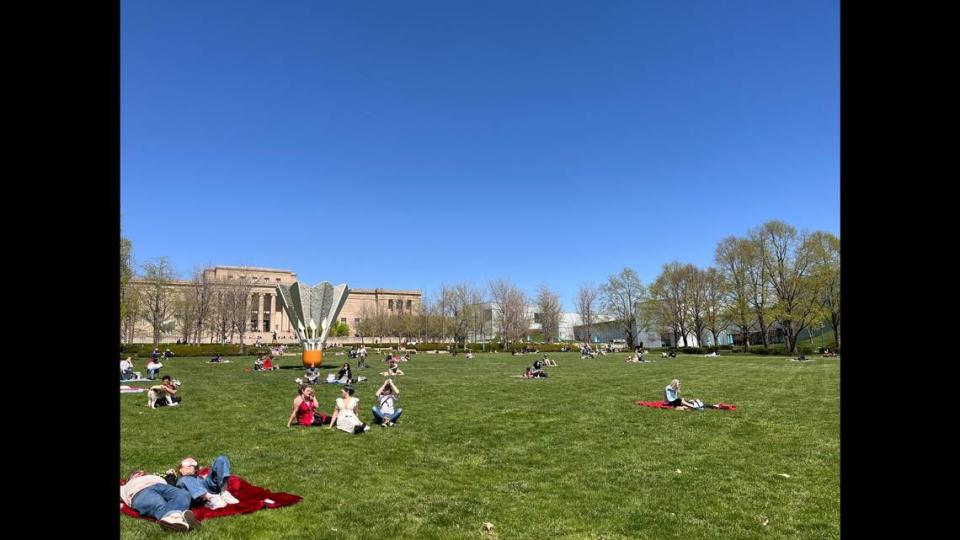
Finding the perfect spot to see the eclipse
The Nelson-Atkins Museum of Art felt like the perfect destination to watch the eclipse. The lawn facing Emanuel Cleaver II Boulevard is massive, and no trees are blocking the middle section, giving viewers a clear view of the sun.
Choosing to visit the museum for the eclipse was a last-second event. Nearby gas stations and grocery stores were all sold out of eclipse glasses, and it turns out I wasn’t the only one searching with hours to go before the eclipse arrived.
The best place to check for the glasses ended up being the store that specializes in eyewear: America’s Best Contacts & Eyeglasses in Westport. The store had quite a few available and was packed with visitors only looking to buy the protective glasses.
They were only selling in packs of four for $14.99. It was that or keep searching and let time run out, so I bought it and hoped I wouldn’t damage my eyes this time.
I met up with a friend in Westport, and we went to the museum. I wasn’t sure what to expect this time. I only remember the sky turning dark and the streetlights turning on at Tiger Plaza on Mizzou’s campus during the early afternoon.
Whatever happened, I’m sure it’s something I’ll remember this time.
What happened during the partial solar eclipse?
Kansas City experienced a partial solar eclipse. In the metro area, the sun was about 90% covered by the moon at the peak. Tons of watch parties were happening around town for the event, which will not happen again until 2044.
At around 1:57 p.m., when the eclipse reached its peak and not a cloud in the sky, the crowd felt the warm and sunny 70-degree day cool and darken, if only for a brief moment. Compared to the 2017 eclipse, this one had a wider path, longer totality — up to 4.5 minutes — and crossed over more populated areas of the United States, but Kansas City wasn’t one of those areas.
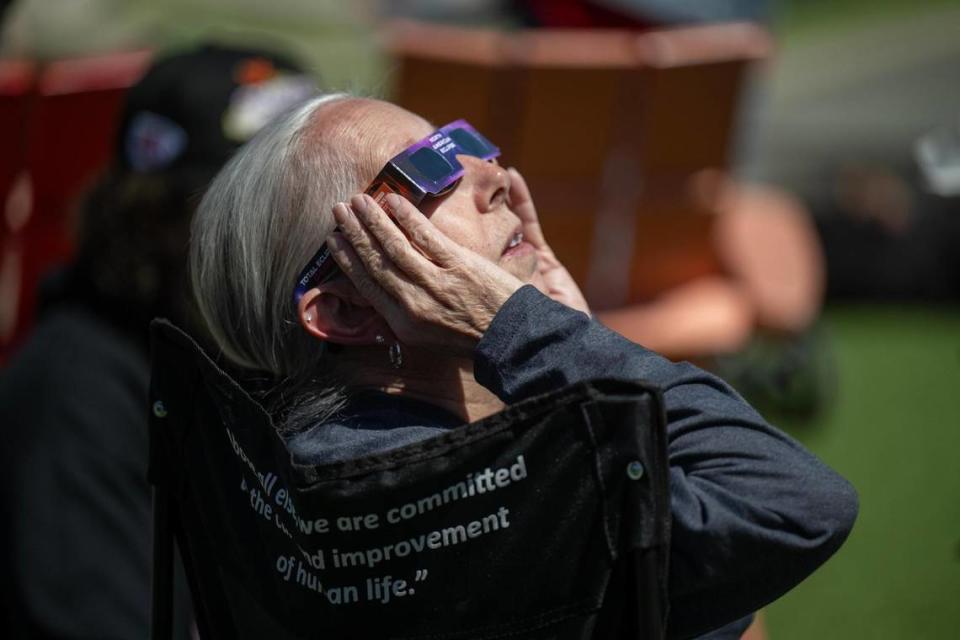
When the eclipse reached its peak, that’s when it felt like an average cloudy day on the museum’s lawn. Brief peaks at the sky with eclipse glasses showed the moon moved from one spot to the next.
For a few viewers, seeing the eclipse reminded them of how much their lives have changed since 2017’s eclipse.
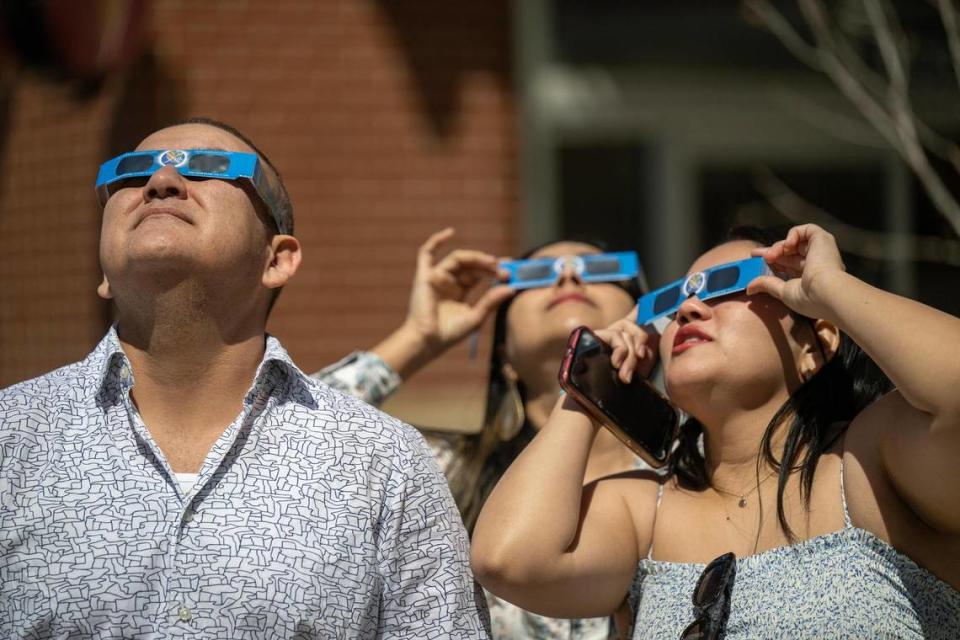
Sitting on the stairs near the museum’s art golf course, Meghann Henry, wearing a headband and earrings with sun and moon designs, was here with her husband, Micah Schuele. The couple hadn’t met when the eclipse covered Kansas City fully in 2017.
Henry reflected back to that time when she saw the eclipse with co-workers during a private event at the Kansas City Zoo. She no longer has to worry about the animals at the zoo, but Henry and Schuele both wondered how their cats would react.
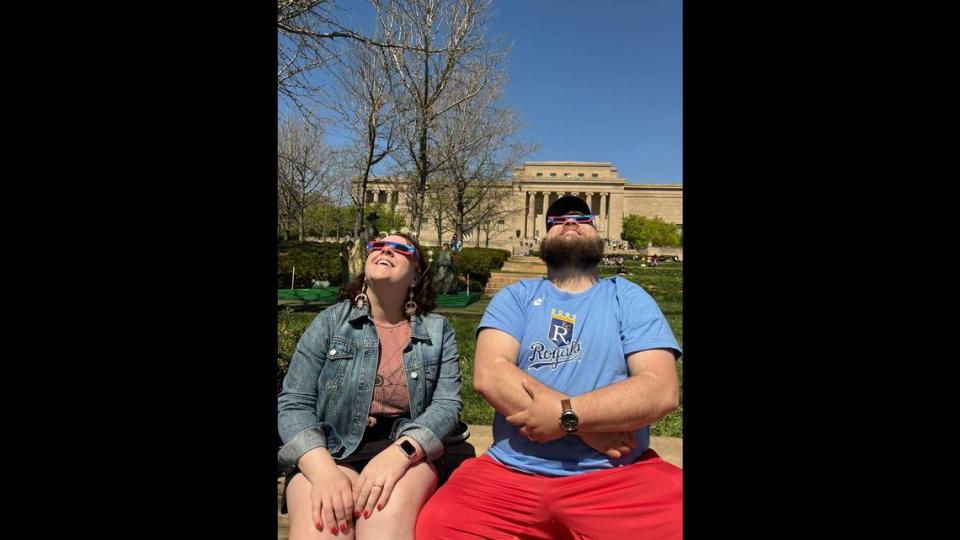
“I was having a bit of existential crisis thinking about how much has changed in the seven years since the last one,” Henry said. “I’m like, oh my gosh, what’s going to happen in 20 years.”
Lacy Fox was here on the lawn with her daughter, 5-year-old Maria. When the eclipse happened in 2017, Lacy watched from her office and only had one child to worry about, a 1-year-old at a daycare.
Now, she was able to share this moment with her daughter. The school her kids attend lets kindergarteners out early while the older kids have activities planned for the eclipse.
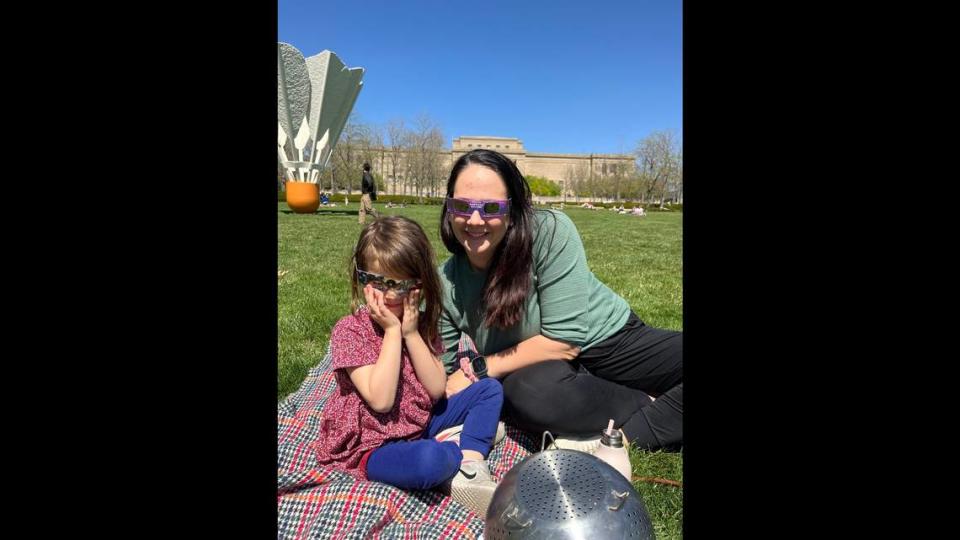
“She’s getting confused because she thinks she sees the moon up there,” Lacy said of her daughter, seeing the crescent shape in the sky.
Nobody on the lawn forgot their glasses, including myself. It was cool to see the sky gradually get darker as the moon obscured some of the sun. The conversations happening around the lawn also quieted as the moon covered the sun and the eclipse reached its peak in town, capturing everyone’s attention.
Even though the eclipse came and went, it’s a moment we won’t forget.

